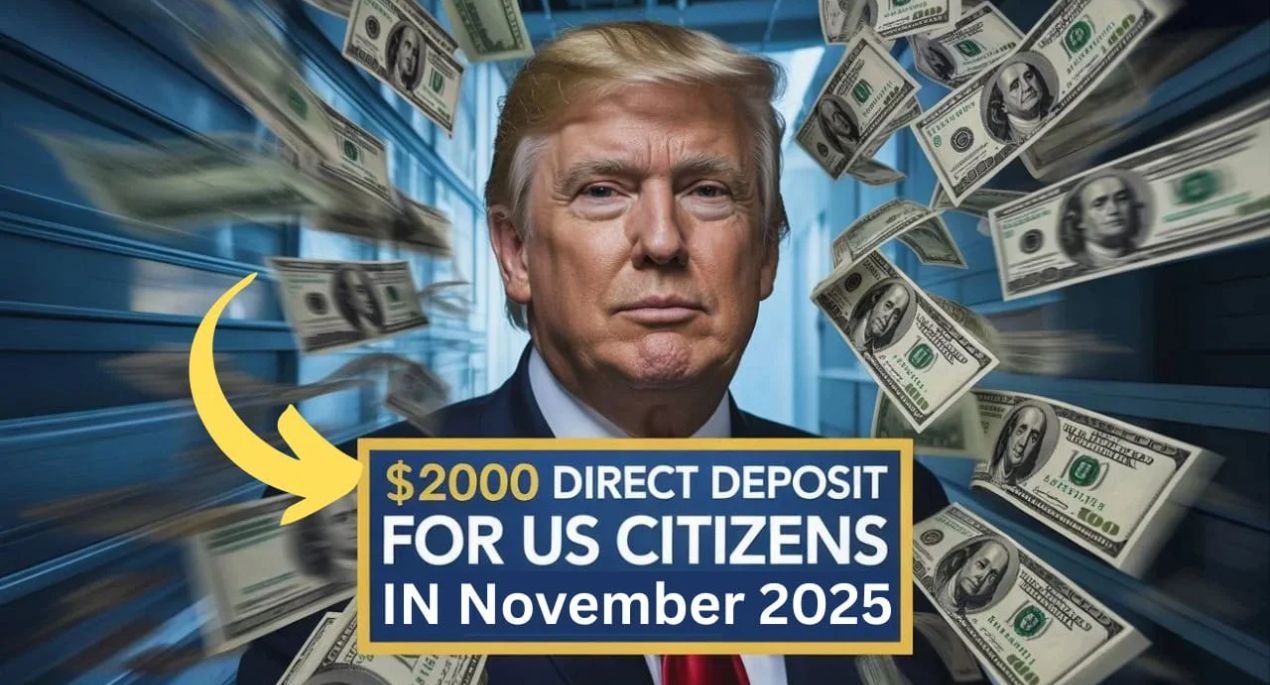$2,000 Direct Deposit : As the end of 2025 approaches, many U.S. citizens are hearing discussions about a potential new federal payment to help with the cost of living. While not officially confirmed by the government as of yet, there is significant speculation about a $2,000 direct deposit being issued to eligible individuals in November. This measure is being considered to provide financial stability to families, seniors, and low-income households who are still feeling the effects of economic pressures.
Understanding the Proposed $2,000 Payment
This potential $2,000 payment is part of ongoing federal efforts to offer financial support to Americans navigating a period of economic uncertainty. Though it may not be formally titled a “stimulus check,” its purpose is similar: to deliver direct financial assistance to those who need it most. The payment is intended to help cover essential expenses like groceries, utilities, and housing costs, particularly as the holiday season nears.
Who Might Be Eligible for the Payment?
Eligibility for the payment, should it be approved, is expected to follow guidelines similar to past relief programs. The primary determining factor will be income, based on tax return data.
Based on these precedents, the following groups are anticipated to qualify:
- Single taxpayers with an adjusted gross income of less than $75,000.
- Married couples filing jointly with a combined income of less than $150,000.
- Heads of household with an annual income of less than $112,500.
It is also expected that recipients of Social Security benefits (SSI/SSDI), veterans, and other low-income individuals who do not typically file tax returns would receive the payment automatically. For those with incomes above these thresholds, the payment amount would likely be gradually reduced.
When Could the Payments Arrive?
If the payment is authorized, the IRS is projected to begin distribution in mid-to-late November 2025. The timeline would vary depending on the payment method:
- Direct Deposits: Could be processed between November 15 and November 25, 2025, for individuals whose bank details are on file with the IRS.
- Paper Checks: Would likely be mailed out starting in late November, with delivery times depending on postal service speeds.
- EIP Debit Cards: A smaller number of recipients might receive their funds via a prepaid debit card, which could arrive in early December.
How to Receive the Payment and Important IRS Instructions
Should this payment become a reality, the IRS will likely distribute it automatically, requiring no application. However, you can take steps now to ensure you receive any potential payment without delay:
- File Your Taxes: Ensure your 2024 tax return has been filed, as this is the primary document the IRS will use to determine your eligibility and payment amount.
- Update Your Information: Use the IRS’s “Get My Payment” portal (once it is activated for this program) to confirm your payment status and update your direct deposit information or mailing address if necessary.
- Stay Informed and Vigilant: Regularly check the official IRS website (IRS.gov) for updates. Be aware that the IRS will never initiate contact via email, text, or social media to ask for personal or financial information.
The Importance of This Financial Relief
For many Americans, a $2,000 payment would represent a crucial financial cushion. It could help families pay down debt, cover overdue bills, or manage rising medical and grocery costs. This direct support is more than just immediate relief; it is a step toward greater financial security for millions facing ongoing economic challenges.
Frequently Asked Questions
1. Is the $2,000 direct deposit confirmed?
No, it is not yet officially confirmed. It is currently a proposal under discussion by the federal government.
2. Do I need to apply to receive the payment?
No. If approved, the payment is expected to be sent automatically to eligible individuals based on their most recent tax return or federal benefits information.
3. What if I didn’t file a tax return for 2024?
Recipients of federal benefits like Social Security or veterans’ benefits will likely be enrolled automatically. Non-filers should monitor the IRS website for specific instructions, which may involve filing a simple form.
4. Will this payment affect my Social Security or SSI benefits?
No. This type of direct payment is not considered income and will not impact your eligibility for or the amount of your federal benefits.
5. Can I track my payment?
Yes. If the payment is approved, the IRS will likely reactivate the “Get My Payment” tool on its website, allowing you to check the status of your deposit or mailed payment.
